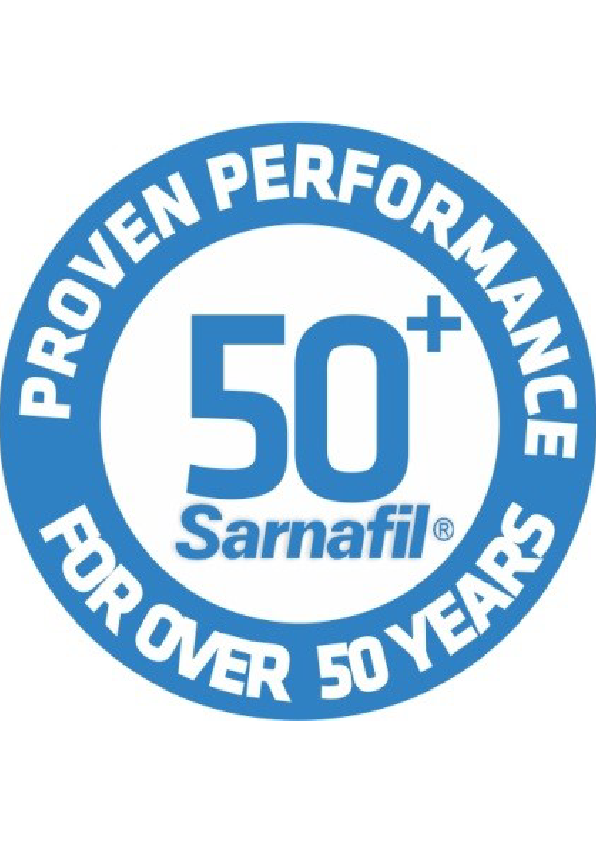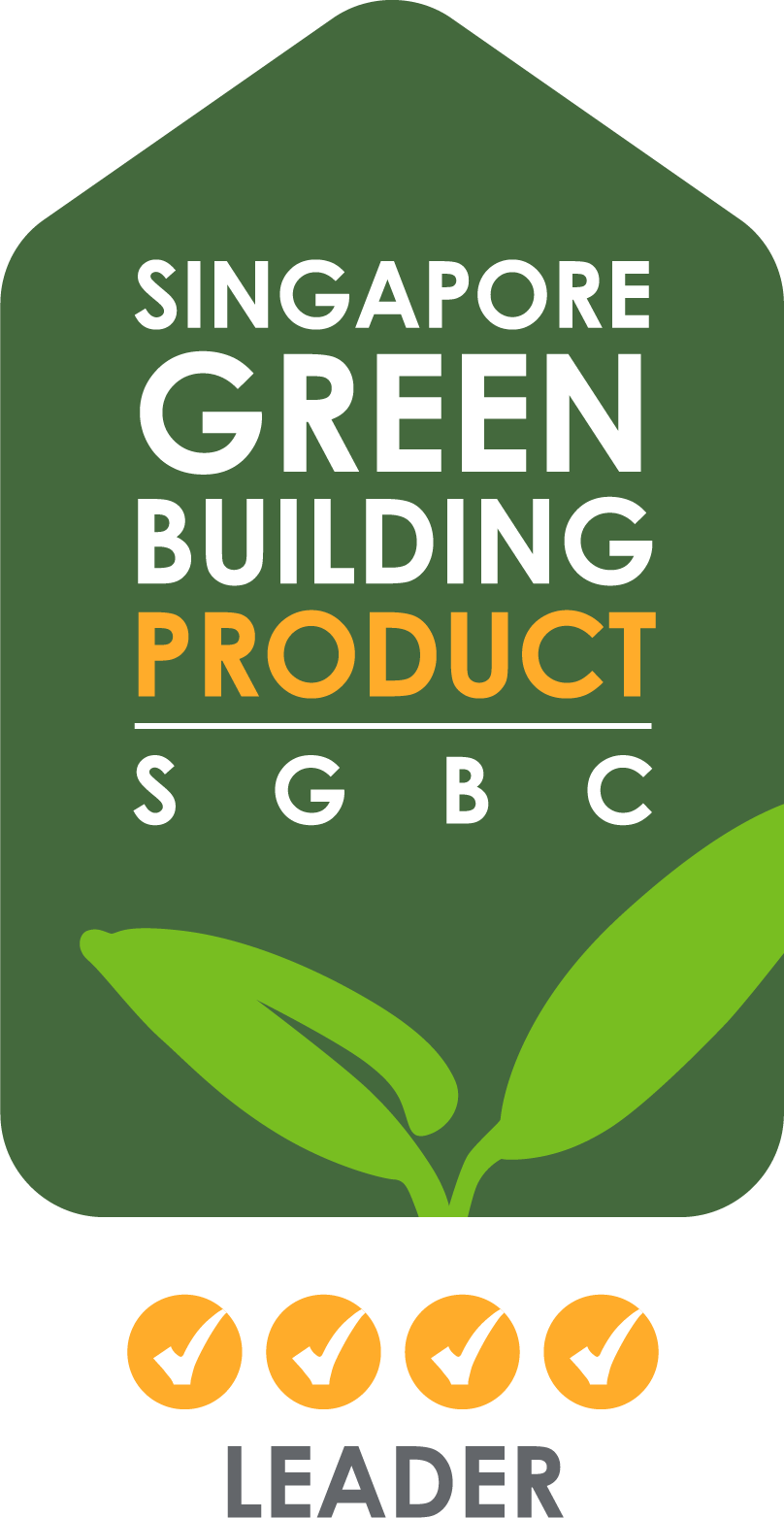Sarnafil® G 476-12
Sarnafil® G 476-12 (thickness 1.2 mm) is a multi-layer, synthetic roof waterproofing membrane based on polyvinyl chloride (PVC) with an inlay of non-woven glass fibre. Sarnafil® G 476-12 is a hot-air weldable roof membrane, formulated and designed for use in all global climatic conditions.
- Proven performance over decades
- High dimensional stability from glass fleece inlay
- High water vapour permeability
- Resistant to all common environmental influences
- Resistant to mechanical influences
- Resistant to micro-organisms
- Resistant to root penetration
- Hot-air weldable
- No open flame equipment required


Usage
Waterproofing membrane for ballasted roofs:- Roof gardens (intensive / extensive)
- Utility roofs
- Inverted roofs
- Balconies and terraces
- Plaza decks
- Planters
- Split slab applications
- Concrete slabs
Advantages
- Proven performance over decades
- High dimensional stability from glass fleece inlay
- High water vapour permeability
- Resistant to all common environmental influences
- Resistant to mechanical influences
- Resistant to micro-organisms
- Resistant to root penetration
- Hot-air weldable
- No open flame equipment required
Packaging
Standard rolls are wrapped individually in a blue PE-foil.
| Packing unit | Refer to price list |
| Roll length | 25.00 m |
| Roll width | 2.00 m |
| Roll weight | 82.00 kg |
Refer to current price list for packaging variations.
Colour
| Surface | Matt |
| Colours | |
| Top Surface | Orange |
| Bottom surface | Dark Grey |
Product Details
APPROVALS / STANDARDS
- CE Marking and Declaration of Performance to EN 13956 - Polymeric sheets for roof waterproofing
- GB 12952, Sarnafil® G 476-12, Test report No. RS19–21
- Quality Management System in accordance to EN ISO 9001/ 14001
- Certified Green Label by Singapore Green Building Council, Certificate Nbr. SGBP 3653
Chemical Base
Polyvinyl Chloride (PVC)
Shelf Life
5 years from date of production.
Storage Conditions
Product must be stored in original unopened and undamaged packaging in dry conditions and temperatures between +5 °C and +30 °C. Store in a horizontal position. Do not stack pallets of the rolls on top of each other, or under pallets of any other materials during transport or storage. Always refer to packaging.
Product Declaration
EN 13956: Polymeric sheets for roof waterproofing
GB 12952 - Type G
GB/T 35468–2017
Visible Defects
| No visible defects | (EN 1850-2) |
Length
| 25 m (-0 / +5 %) | (EN 1848-2) |
Width
| 2 m (-0.5 / +1 %) | (EN 1848-2) |
Effective Thickness
| 1.2 mm (-5 / +10 %) | (EN 1849-2) |
Straightness
| ≤ 30 mm | (EN 1848-2) |
Flatness
| ≤ 10 mm | (EN 1848-2) |
Mass per Unit Area
| 1.64 kg/m2 (-5 % / +10 %) | (EN 1849-2) |
System Structure
The following products must be considered for use depending on roof design:
- Sarnafil® G 410-12 Sheet for detailing
- Sarnafil® Metal Sheet
- Sarnabar or S-U bar
- S-Welding Cord
- Sarna Seam Cleaner
- Sarna Cleaner
- S-Felt
Ancillary products: wide range of accessories is available e.g. prefabricated parts, roof drains, scuppers, protection sheets and separation layers.
Compatibility
Not compatible in direct contact with bitumen, tar, fat, oil, solvent containing materials and other plastic materials, e.g. expanded polystyrene (EPS), extruded polystyrene (XPS), polyurethane (PUR), polyisocyanurate (PIR) or phenolic foam (PF). Use an approved separation layer to completely separate Sarnafil G476 from any incompatible substrate.
Resistance to Impact
| Hard substrate | ≥ 400 mm |
| Soft substrate | ≥ 800 mm |
Resistance to Static Load
| Soft substrate | ≥ 20 kg |
| Rigid substrate | ≥ 20 kg |
Tensile Strength
| Longitudinal (md)1) | ≥ 8.5 N/mm2 |
| Transversal (cmd)2) | ≥ 8.5 N/mm2 |
1) md = machine direction
2) cmd = cross machine direction
Elongation
| Longitudinal (md)1) | ≥ 180 % |
| Transversal (cmd)2) | ≥ 180 % |
1) md = machine direction
2) cmd = cross machine direction
Dimensional Stability
| Longitudinal (md)1) | ≤ |0.2| % |
| Transversal (cmd)2) | ≤ |0.2| % |
1) md = machine direction
2) cmd = cross machine direction
Joint Shear Resistance
| ≥ 500 N/50 mm | (EN 12317-2) |
Foldability at Low Temperature
| ≤ -25 °C | (EN 495-5) |
Reaction to Fire
| Class E | (EN ISO 11925-2, prEN 13501-1) |
Effect of Liquid Chemicals, Including Water
| On request | (EN 1928) |
Resistance to UV Exposure
Not resistant for permanent exposure to UV radiation.
Water Tightness
|
Application
Ambient Air Temperature
-20 °C min. / +60 °C max.
Substrate Temperature
-30 °C min. / +60 °C max.
EQUIPMENT
Hot welding overlap seams
Electric hot-air welding equipment, such as hand-held manual hot air welding equipment and pressure rollers or automatic hot air welding machines with controlled hot-air temperature capability of a minimum +600 °C.
Recommended type of equipment:
- Manual: Leister Triac
- Automatic: Sarnamatic 681
SUBSTRATE QUALITY
- The supporting structure must be of sufficient structural strength to apply all new and existing layers of the roof build-up. Complete roof system must be designed and secured against wind uplift loadings.
- The substrate surface must be uniform, smooth and free of any sharp protrusions or burrs, etc.
- Sarnafil® G 476-12 must be separated from any incompatible substrates / materials by an effective separation layer to prevent accelerated ageing.
- The supporting layer must be compatible to the membrane, solvent resistant, clean, dry and free of grease and dust.
- Metal sheets must be degreased with Sarna Cleaner before adhesive is applied.
APPLICATION
Installation procedure
Strictly follow installation procedures as defined in method statements, application manuals and working instructions which must always be adjusted to the actual site conditions.
Fully Adhered System
- Sarnafil G 476 is lay flat without creases and fully adhered/ bonded on roof surfaces and junction areas by suitable Sarnacol adhesive (See Sarnacol PDS).
- For main roof areas, overlap seams of 80 mm are hot air welded by automatic hot air welding machines, wherever possible, with controlled hot air temperature to ensure a good and continuous fused seam weld.
- For detailing and corner areas, overlap seams are welded manually with hand held hot air welding gun and pressure rollers, best by skilled welders.
- The roof perimeter has to be fixed mechanically with Sarnabar/ S-U bar to keep the membrane in place.
- It is then covered with ballast or a protection layer immediately after laying and seam welding.
Balconies, terraces and plaza decks
- A protective sheet of Sarnafil® Protective Sheet or S-Felt Type GK must be installed on top of the Sarnafil® G 476-12 membrane.
- The ballasted protective layer (slabs, tiles, etc) must be installed on top of a drainage layer (chippings, gravel, elevated beds or similar).
Flashings
Refer to standard details in Application Manual
Hot welding overlap seams
Overlap seams must be welded by electric hot-welding equipment. Welding parameters including temperature, machine speed, air flow, pressure and machine settings must be evaluated, adapted and checked on site according to the type of equipment and the climatic conditions prior to welding. The effective width of welded overlaps by hot air must be a minimum 20 mm.
Testing overlap seams
The seams must be mechanically tested with a screwdriver (rounded edges) to ensure the integrity/completion of the weld. Any imperfections must be rectified by hot-air welding.
